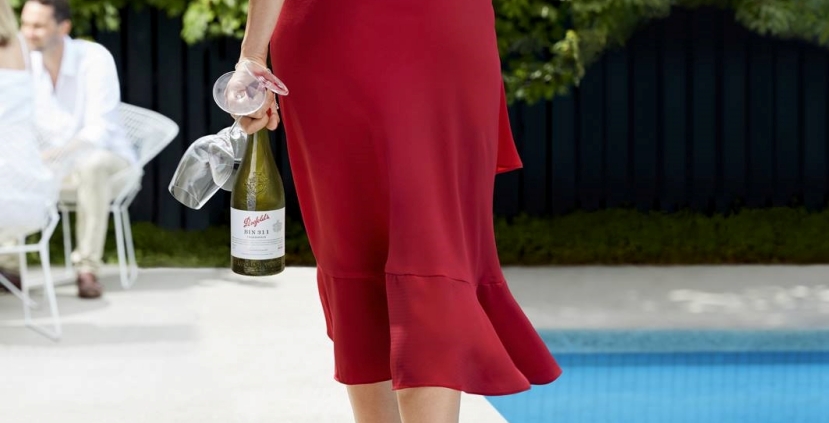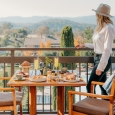
There are rare examples where a name carries such unquestioned weight that it needs no introduction. Think of a bespoke Savile Row suit—meticulously crafted by one of the legendary houses like Gieves & Hawkes or Huntsman—where every stitch, every cut speaks of unrivaled precision and timeless style. Or a Rolls-Royce, whose presence alone commands attention without needing to say a word. In Australia’s wine world, Penfolds Wine and The Grange holds that kind of singular standing. It is not just a wine. It is a statement.

The story begins far from today’s polished cellar doors and collector auctions. It begins with a couple, Dr. Christopher and Mary Penfold, who arrived in Adelaide in 1844 with little more than hope, determination, and a suitcase of vine cuttings. Their modest stone cottage—today’s Magill Estate—still stands, surrounded by vines that have quietly witnessed nearly two centuries of evolution. What started as fortified wines meant to serve medicinal purposes gradually expanded into table wines that challenged convention.

Then came Max Schubert, a young errand boy who rose through the ranks, unafraid to defy expectations. In the aftermath of World War II, armed with inspiration from Bordeaux’s old-world methods, Schubert began experimenting with Shiraz blends and barrel aging that no one in Australia had seen before. His creation, the Grange Hermitage, would eventually become simply Grange—a name synonymous with Australian wine excellence.
Schubert’s vision was initially met with skepticism. The Australian palate wasn’t ready for the complexity and patience this wine demanded. Company executives insisted he stop production. Instead, Schubert kept working in secret, convinced he had something extraordinary. His persistence paid off. By 1960, the Grange was winning international awards and challenging the entrenched European wine hierarchy. The shockwaves rippled far beyond Australia’s shores.
Penfolds, with the Grange at its forefront, helped elevate Australia from a minor wine producer to a powerhouse, setting the stage for other iconic names like Henschke and d’Arenberg to follow.

What sets Grange apart isn’t just its pedigree, but its approach. Unlike many of the world’s great wines that rely on single vineyards, Grange is a blend sourced from the best Shiraz grapes across Barossa and other Penfolds estates. A touch of Cabernet Sauvignon is added before fermentation, adding depth and structure.
Its 20-month aging in American oak barrels—an uncommon choice—imparts distinctive notes that separate it from the French oak tradition. Released years after harvest, Grange demands patience but rewards with layers of flavor that unfold over decades.

Take the 2021 Penfolds Grange—the 70th vintage since Max Schubert’s original 1951 experiment—and it arrives not just with anticipation, but with near-universal acclaim. Called “undoubtedly destined for greatness,” it earned a near-perfect 99 points from The Australian’s Nick Ryan, who placed it alongside legendary vintages like 1971 and 1990. Even more compelling, it recently garnered two perfect scores from international critics, described by Penfolds’ Chief Winemaker Peter Gago as “buoyant, layered, accessible”—a Grange that both invites and demands engagement. This isn’t just another strong release—it’s a vibrant testament to what Grange can—and should—be.

But Penfolds is so much more than its flagship Grange. In recent years, the winery has expanded its footprint far beyond South Australia, sourcing fruit from some of the world’s most celebrated regions. In California, Penfolds crafts bold but finely tuned Cabernets from Napa and Sonoma, marrying New World ripeness with the structure and cellaring potential that defines its style. In France, it has partnered with Bordeaux producers for blends that merge Australian innovation with centuries-old winemaking tradition. Even Champagne has entered the fold through collaborations with respected maisons, further proving that Penfolds’ vision is not bound by geography.
This global reach sits alongside a diverse Australian portfolio: the power and polish of Bin 707 Cabernet Sauvignon, the silky restraint of St Henri Shiraz, the mineral-driven elegance of Bin 311 Chardonnay, and the layered complexity of blends like Bin 389. Each wine is different, yet all share the same precise craftsmanship—a Penfolds hallmark whether the grapes are grown in Barossa, Napa, or Bordeaux.
But in Australia, where it all began, the experience of visiting Magill Estate captures the spirit of Penfolds more fully than any bottle. Just outside Adelaide’s urban spread, the estate feels like a quiet anomaly—an urban vineyard with century-old vines still bearing fruit for production. The heritage-listed winery, with its bluestone cellars and sky-high chimney marked by the Penfolds name, carries a weight of history few places can match.
Guests begin with a guided tour through the old winery, wandering underground barrel rooms and past original production sites before reaching the Grange Cottage, the Penfolds’ original home from 1844. Tasting options range from casual samplings to masterclasses that delve deep into Penfolds’ philosophy and history. Sitting in a private room, sipping the flagship Grange alongside other coveted wines, the narrative of innovation, resilience, and craftsmanship becomes tangible.

The Magill Estate Restaurant offers a final, unforgettable act. With seating for just 36, it’s an intimate stage for a seven-course menu that shifts with the seasons, showcasing local produce with nods to Japanese and Brazilian techniques learned from Michelin-star kitchens. The food doesn’t simply accompany the wine—it dialogues with it. Each dish is layered and precise, from deboned chicken wings stuffed with lobster and scallop to dry-aged duck with fennel salad, all paired with Penfolds wines selected by sommeliers who understand the subtle interplay.

Penfolds is a story of 175 years that still feels alive and evolving. For those who take the time to listen—to the vines, the wine, and the hands that make it—the Grange is more than a bottle. It is Australia’s declaration of what wine can be.

